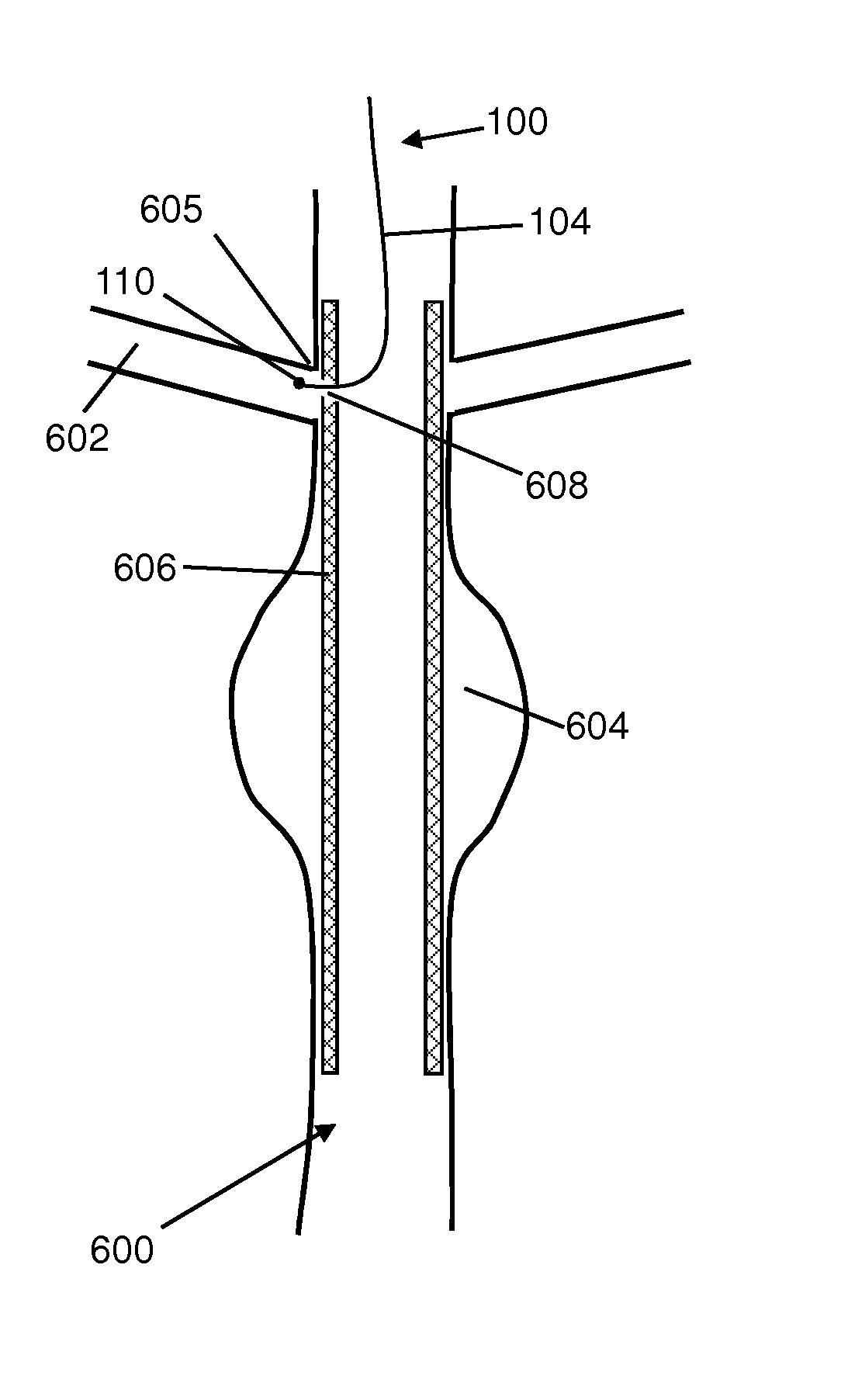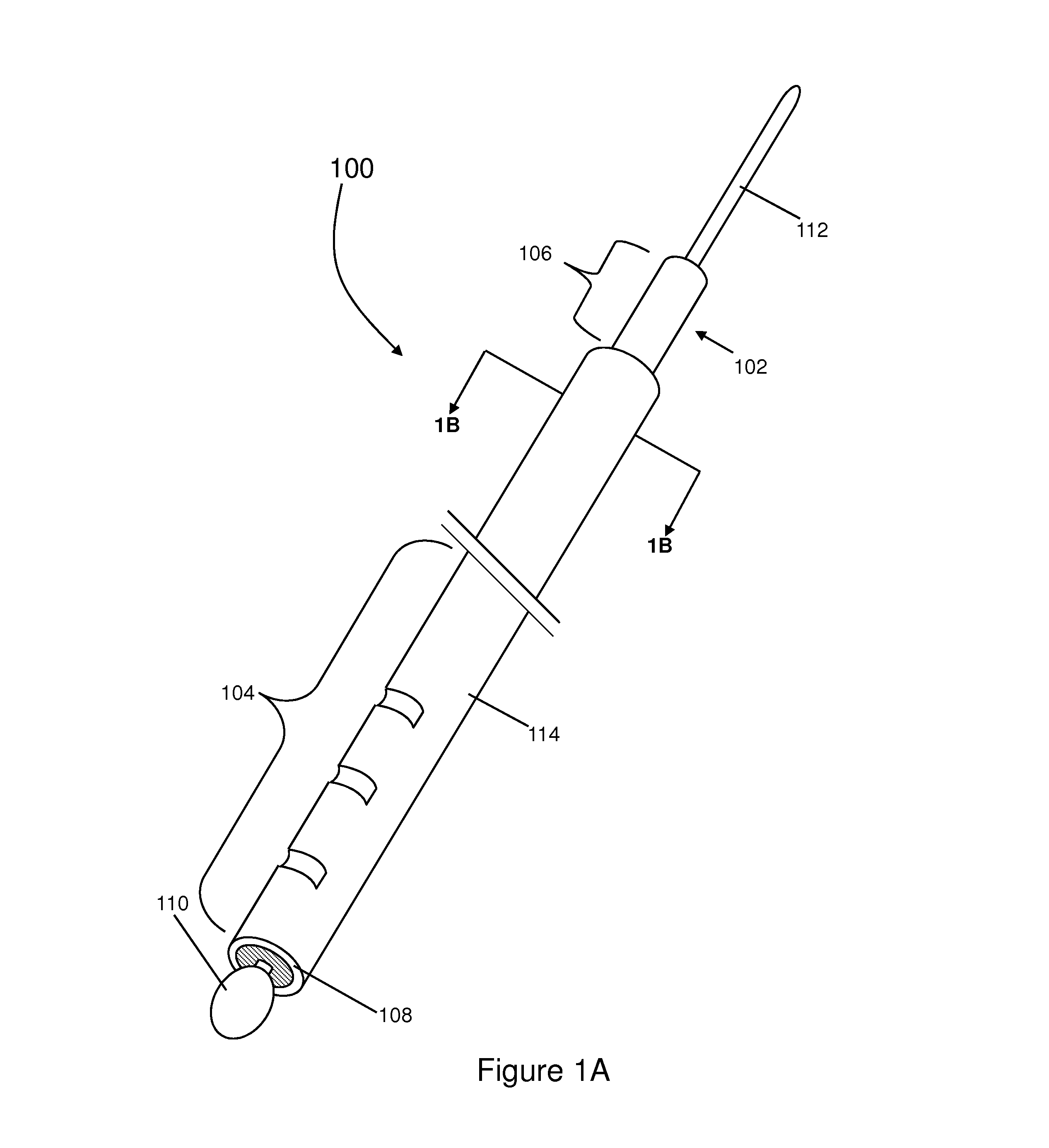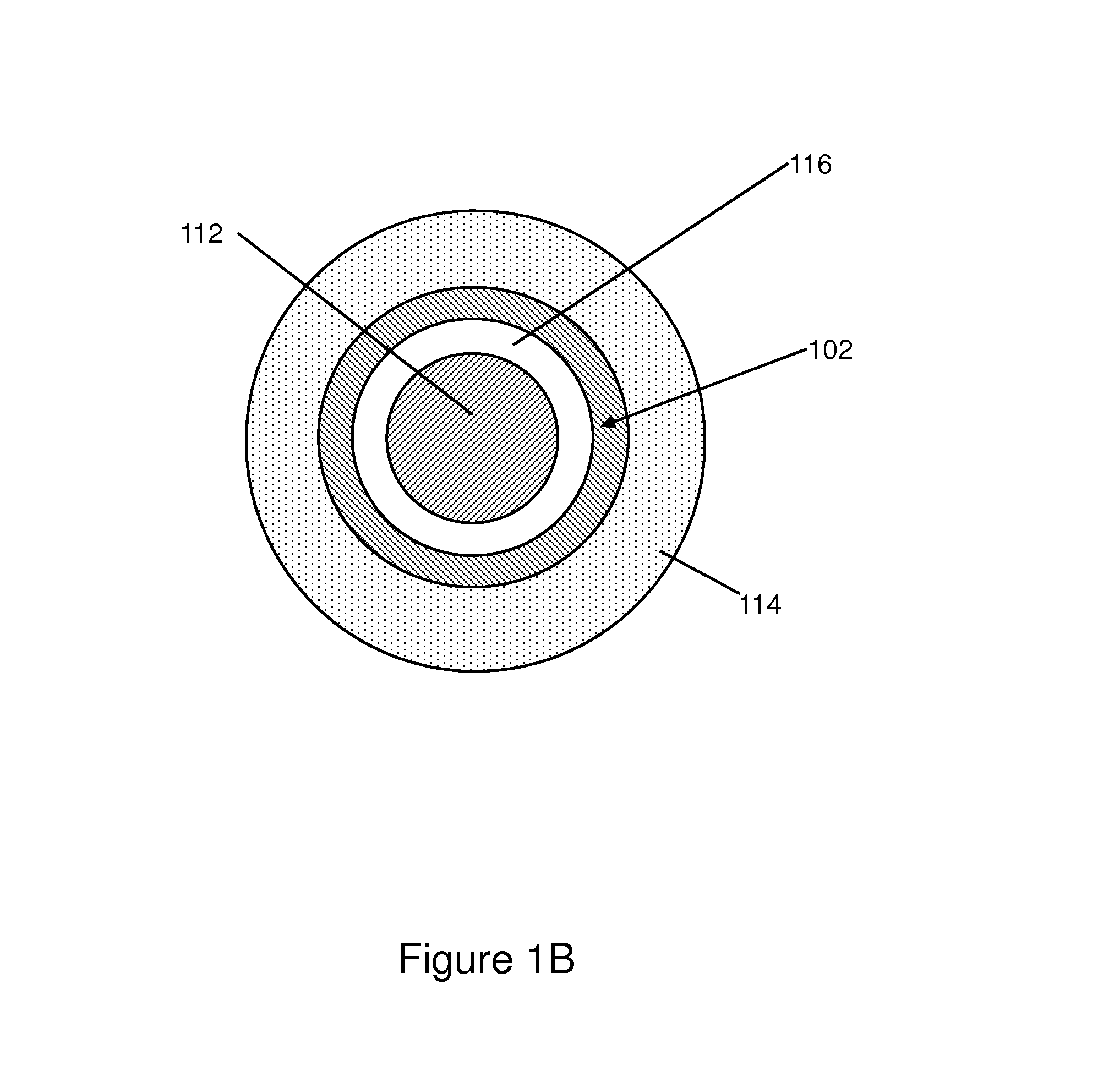Stent Graft Fenestration
- Summary
- Abstract
- Description
- Claims
- Application Information
AI Technical Summary
Benefits of technology
Problems solved by technology
Method used
Image
Examples
example 1
[0100]In a first example, an embodiment of a proposed method is used to create a channel 512, seen in FIG. 5B, within a septal patch 510 made of foreign material, the septal patch 510 defining a material first surface 514 and a substantially opposed material second surface 516. The channel 512 extends between the material first and second surfaces 514 and 516. The septal patch 510 extends across an aperture 518 defined by the septum 520 of the heart 500 of the patient, for example an atrial septum or a ventricular septum. For example, the septal patch 510 covers the aperture and extends in a plane outside of the septum 520. In other examples, the septal patch 510 extends inside the aperture 518. Some of these procedures may involve patients that have had a septal defect repaired with the septal patch 510. In some cases, such patients may suffer from one or more conditions which require access to the left side of the heart for treatment to be performed. In such situations, access to ...
example 2
[0105]With reference first to FIGS. 6A and 6B, an antegrade approach to in-situ channel creation is provided. In this approach, the distal end region 104 is introduced into the body of the patient through the body vasculature inside the thoracic cavity, or in other words from a position superior to the diaphragm of the patient, and advanced towards the abdominal aorta 600 in which the electrode 110 is then positioned. FIG. 6A shows the electrode 110 of the apparatus 100 positioned in the abdominal aorta 600 substantially opposite the renal artery ostium 605, which is occluded by the stent-graft 606. At this point, energy may be delivered from an energy source through the electrode 110 in order to create a channel 608, as seen in FIG. 6B, in or through the stent-graft 606. FIG. 6B shows the electrode 110 after it has been advanced through the channel 608 into the renal artery 602. Creation of the channel allows for fluid communication and restoration of blood flow between the abdomin...
example 3
[0109]With reference now to FIGS. 8A-8D, alternate methods for in-situ creation of a channel through a stent-graft are illustrated. In the illustrated embodiments, a stent-graft 806, composed of a foreign material, has been placed to cover an aneurysm 804 in a section of the descending aorta, more specifically, within the thoracic aorta 800. As shown in these figures, the stent-graft 806 occludes the opening or ostium 805 of the Left Subclavian Artery (LSA) 802.
[0110]In the illustrated example, the positioning of the stent-graft 806 at the LSA ostium 805 is necessitated by the proximity of the LSA ostium 805 to the site of the aneurysm 804. A challenge is generally presented when an aneurysm 804 occurs within a vessel near an ostium of a side branch vessel, such as the LSA 802. It may become difficult to place the stent-graft 806 within the vessel to ensure protection of the aneurysm 804 while maintaining patency of the side branch ostium. In one such example, the aneurysm 804 and t...
PUM
 Login to View More
Login to View More Abstract
Description
Claims
Application Information
 Login to View More
Login to View More - Generate Ideas
- Intellectual Property
- Life Sciences
- Materials
- Tech Scout
- Unparalleled Data Quality
- Higher Quality Content
- 60% Fewer Hallucinations
Browse by: Latest US Patents, China's latest patents, Technical Efficacy Thesaurus, Application Domain, Technology Topic, Popular Technical Reports.
© 2025 PatSnap. All rights reserved.Legal|Privacy policy|Modern Slavery Act Transparency Statement|Sitemap|About US| Contact US: help@patsnap.com



